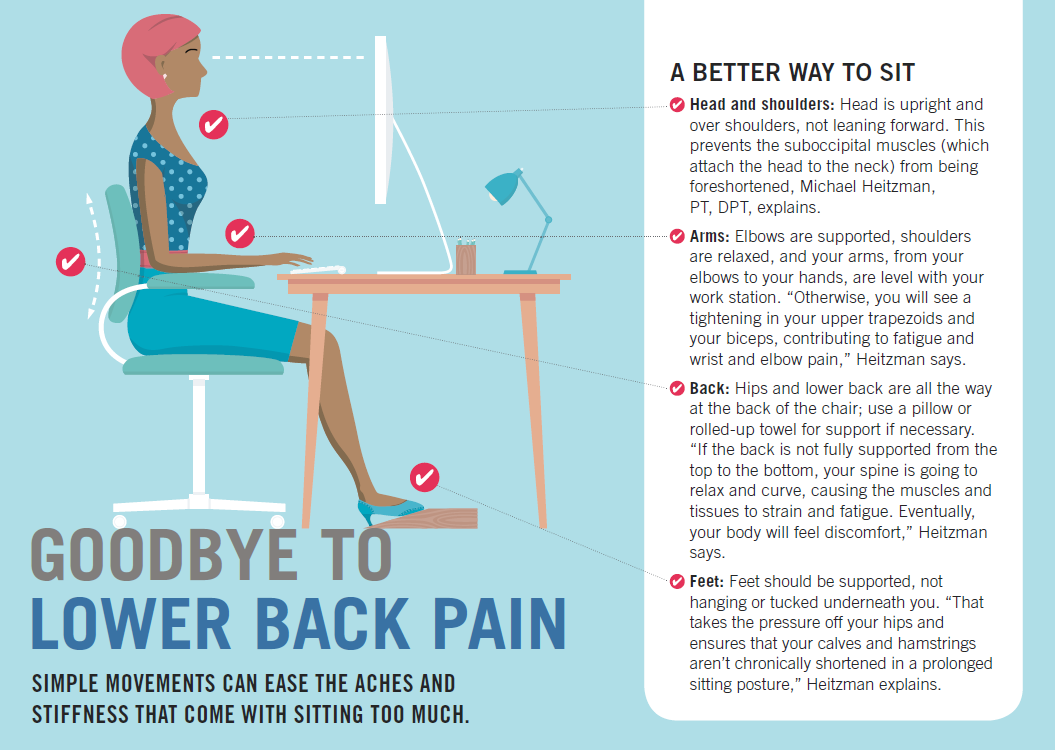
More people are working from home. More people are staying at home. And physical therapists are seeing more complaints of pain in the lower back and neck.
“We’re finding that many patients with new onsets of back and neck pain are people who are just generally moving a lot less as they stick close to home during the pandemic,” says Michael Heitzman, PT, DPT, a supervisor at the Saint Barnabas Medical Center Outpatient Physical Rehabilitation Center in Millburn.
The solution, though simple, is often overlooked: Move more. “There’s a saying in physical therapy: ‘Motion is lotion,’” Heitzman explains. “Regular motion tends to ‘lubricate’ the body so you don’t feel stiff. Moving more is going to improve the quality of your life.”
Get out of the chair for two to five minutes every hour, Heitzman says.
“Take a walk around the house, or march in place. Do calf raises—standing on your toes and then slowly easing back down—while you’re on the phone. Set your computer higher so you can stand during Zoom meetings,” he suggests.
Along with moving more, people need to be more conscious of how they’re sitting. “About half the time, when people come in with back and neck pain, we end up discussing the kind of workstation they have,” Heitzman says. “People are on the computer for long periods. We need to be sure to move muscles in the opposite direction occasionally.” Heitzman suggests the following stretches:
Standing back bends: “Put your hands on your belt line on your lower back. While standing, bend backwards over your hands,” he says. “This will reverse the strain that sitting has been putting on the spine.”
Shoulder rolls: Occasionally roll your shoulders forward and backward to make sure they’re relaxed.
Wrist flexes: “Usually the wrists are in a static position and only the fingers are moving,” he says. “Take time to occasionally stretch your arms out fully, straight in front of you, and flex your wrists around in big motions.”
“If you’re having severe pain and it’s changing your ability to function and work, absolutely reach out to a movement professional such as a physical therapist or your primary care doctor,” Heitzman says. “But if you’re finding that you’re more sore and stiffer than you have been, try these stretches and see if they make a change.”
For more information about physical therapy and rehabilitation services at Saint Barnabas Medical Center, call 973.322.7500 or visit www.rwjbh.org/sbmcrehab.